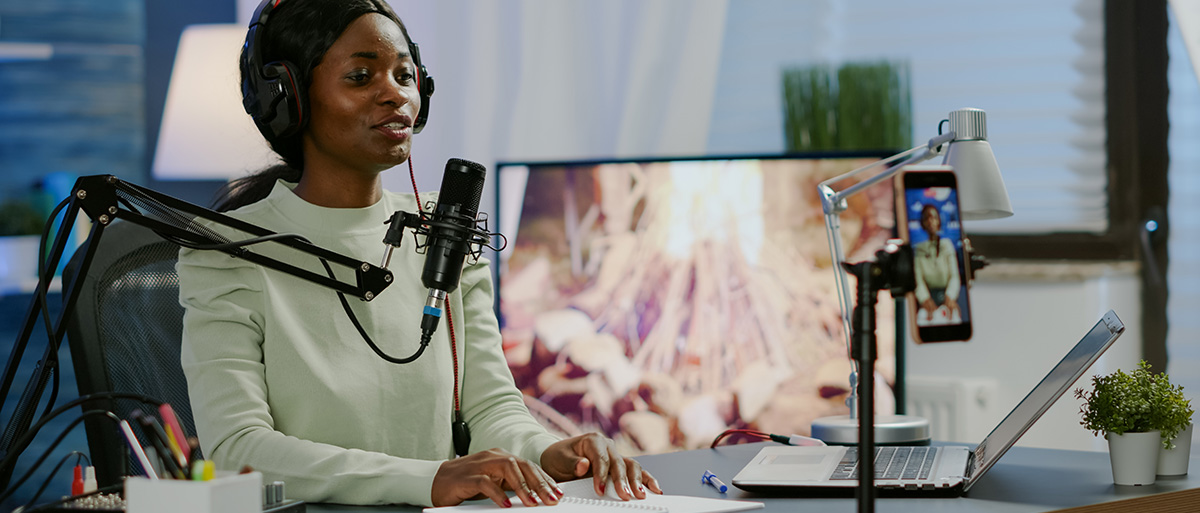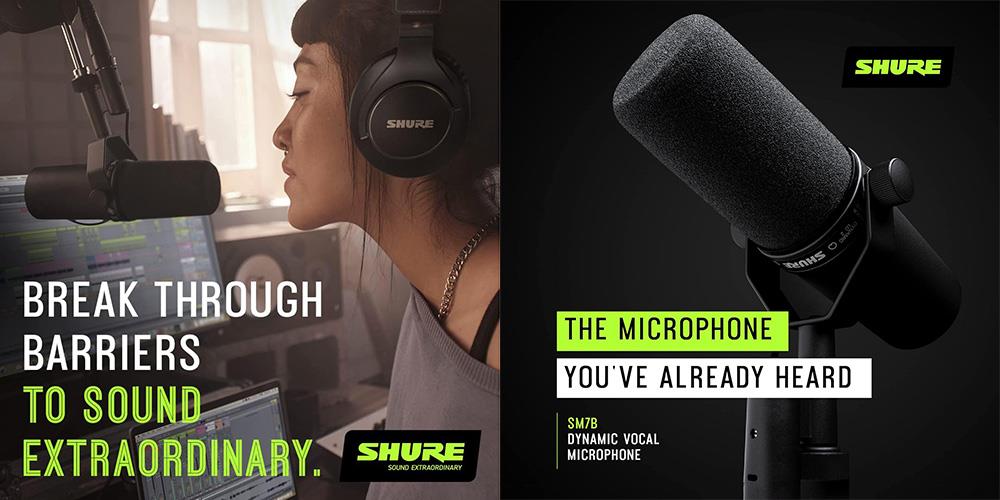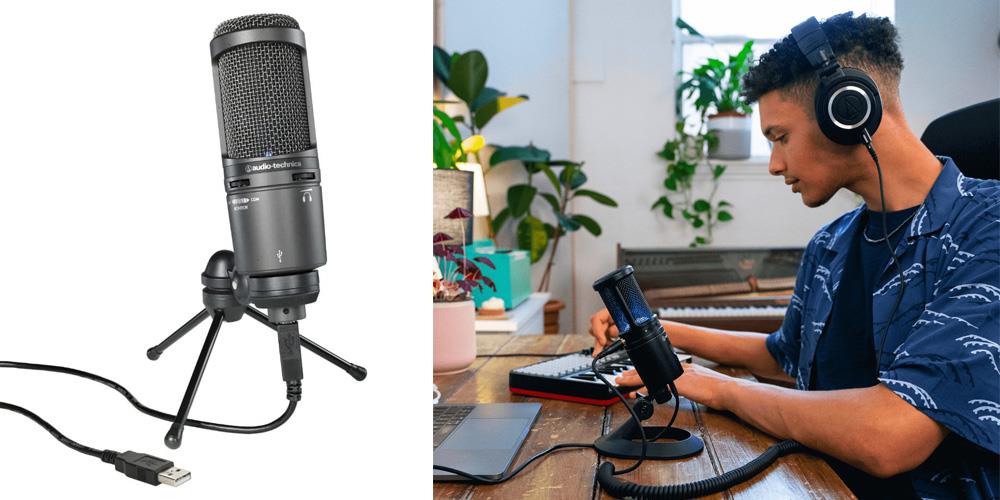 Choosing the Best Home Studio Microphone
Choosing the Best Home Studio Microphone
Choosing the Best Home Studio Microphone: A Guide for Singers, Voice Actors, and Podcasters
Posted
by
Impact Artist Promotions, LLC
on Saturday, March 30, 2024
When it comes to recording high-quality audio, the microphone you choose can make all the difference. Whether you’re a singer laying down vocals, a voice actor bringing characters to life, or a podcaster sharing your thoughts with the world, the right microphone can elevate your sound from amateur to professional. Here’s a guide to help you find the best home studio microphone for your needs.
The microphone is the first point of contact between the sound source and the recording system. It’s the primary tool that captures the nuances and colors of the voice, transforming air vibrations into electrical signals. The choice of microphone can greatly influence the clarity, warmth, and presence of the recorded audio.
For singers, a microphone with a wide frequency response and the ability to handle the dynamic range of the human voice is crucial. It should capture the subtle details of a performance, from the breathy whispers to the powerful high notes, without distortion.
Voice actors need a microphone that can accurately reproduce the character and emotion they bring to their roles. A good voice-over microphone should offer a flat response curve for natural sound reproduction and allow for the actor’s performance nuances to be clearly heard, like the Sennheiser MKH 416.
 Sennheiser MKH 416 Microphone
Sennheiser MKH 416 Microphone
Podcasters require a microphone that delivers clear and intelligible speech. Since podcasts often involve speaking directly to an audience, the microphone should provide a conversational tone with minimal background noise. It should also be versatile enough to handle different speaking volumes and pitches.
In all cases, the right microphone will not only capture the sound accurately but also contribute to the listener’s experience. It can add a professional sheen to the audio, making it more engaging and enjoyable to listen to. The microphone becomes an extension of the artist’s voice, the actor’s character, or the podcaster’s personality, ensuring that the message is conveyed with the intended impact.
Dynamic Versus Condenser Microphones
First, understand the two main types of microphones: dynamic and condenser. Dynamic microphones are robust, handle high sound pressure levels well, and are ideal for live performances. Condenser microphones, on the other hand, are more sensitive and provide a higher level of detail and nuance, which is perfect for studio recording.
 Choosing the Best Home Studio Microphone
Choosing the Best Home Studio Microphone
Top Picks for Home Studio Microphones
- Shure SM58: A classic choice known for its durable construction and cardioid pickup pattern. It’s a solid option for vocalists and podcasters alike. The SM58-LC delivers high-quality vocal reproduction, thanks to its tailored frequency response and brightened midrange for clear and present vocals. The first choice for performers around the globe, the SM58 Dynamic Vocal Microphone is ready to bring any performance to life. From the club to the stadium, Shure has your back. The uniform cardioid polar pattern reproduces every note as it was intended, delivering warm, crisp sound time after time. The uniform cardioid polar pattern reproduces every note as it was intended, delivering warm, crisp sound time after time.
- Sennheiser MKH 416 - The MKH 416 is the perfect mic to give your work that professional feel, thanks to its superb sound isolation and feedback rejection. The venerable MKH 416 is a compact pressure-gradient microphone with short interference tube, highly immune to humidity due to its RF condenser design. Featuring high directivity, low self noise, high consonant articulation and feedback rejection, the MKH 416 can handle difficult exterior filming and reporting conditions without any difficulty. Supercardioid/lobe pattern, matte black finish, supplied with the MZW415 windscreen.
Considered by many as the best choice for professional voice actors: "I actually used a Rode for YEARS, but when I started working with a radio station out of West Palm Beach, they suggested upgrading my setup. I went with a Sennheiser MKH 416 with Universal Audio Apollo Twin. The biggest change I noticed right off the bat was the ability to hone in on my voice and no other background sounds. Working out of a home studio, if a neighbor started cutting grass or my dog started barking, you could definitely hear that in the background. With the Sennheiser, my dog could be barking downstairs with the studio door open and it doesn’t seem to record any of it. Just my voice which is very clear, sounding great without adding much to it. I love it and have used this setup since 2017." - Rebecca Ritchie, professional voice actor. - Rode NT1-A: Praised for its flat frequency response and premium build quality. It’s a favorite among those upgrading to their first XLR microphone. Large-diaphragm cardioid condenser microphone ideal for music production, vocal recording, streaming and podcasting. HF6 1-inch true condenser capsule with a smooth frequency response, high sensitivity and extremely high SPL handling. Exceptionally low noise (4dBA) – the world’s quietest studio condenser microphone. Studio-grade shock mount, pop filter and premium XLR cable included. Built to the highest standard from premium components in RØDE’s precision facilities in Sydney, Australia and backed by a 10-year warranty.
- Shure SM7B: A professional-grade microphone with excellent vocal reproduction and noise rejection capabilities. It’s a bit on the pricier side but is a go-to for industry veterans. ONE MICROPHONE FOR EVERYTHING - Studio Recording, Home Recording, Podcasting & Streaming. The SM7B Is Trusted By The Worlds Leading Vocalists, Podcasters & Streamers. The SM7B’s Dynamic Cartridge With Smooth, Flat, Wide-range Frequency Response Produces Exceptionally Clean & Natural Reproduction Of Both Music & Speech. Found In The Top Podcasting Studios Around The World, The SM7B Air Suspension Shock Isolation & Pop Filter Eliminate Both Mechanical Noise And Breathiness. So Words Get Through And The Rest Stays Out Of The Mix. Professional Live Streaming Starts With A Microphone Capable Of Capturing Exceptionally Clean And Natural Reproduction Of Both Music And Speech. The SM7B Has Been A Pioneer In Such Abilities For Decades.
- Audio-Technica AT2020USB-XP: Offers noise reduction and gain control, making it a versatile choice for various recording environments. Condenser microphone with USB output for digital recording. High quality A/D converter with 16 bit, 44.1/48 kilohertz sampling rate for superb audio. Headphone jack with volume control allows you to monitor the microphone signal with no delay. Mix control allows you to blend your microphone signal and prerecorded audio. High output, the internal headphone amplifier delivers superior clarity and musical detail as well as more volume overall. Compatible with Windows 7, Vista, XP, 2000 and Mac OS X.
- Movo UM700 USB: Provides great sound quality and multiple polar patterns at an affordable price, making it a good entry-level option. With cardioid and omnidirectional polar patterns, you can record in almost any situation with just one mic. Whether on a PC or Phone, the audio is crystal clear, making it an indispensable part of any podcast equipment. Three-capsule array captures 48kHz/24 Bit broadcast quality sound resolution for no-latency and features a powerful frequency response of 20Hz to 20kHz. The UM700 USB microphone excels in capturing studio-grade audio for a wide range of applications, from podcasting and ASMR to gaming and singing.
 Best Home Studio Microphones
Best Home Studio Microphones
Factors to Consider
- Polar Patterns: The directionality of the microphone is crucial. Cardioid patterns are great for home studios as they pick up sound from the front and reject noise from the back.
- Connectivity: USB microphones are convenient and easy to set up, while XLR microphones offer higher quality but require an audio interface.
- Frequency Response: Look for a microphone that captures the full range of your voice, from the low end to the high end.
- Accessories: Consider if you’ll need additional accessories like a pop filter, shock mount, or acoustic treatment to enhance your recording experience.
Budgeting for Quality
While it’s tempting to go for the cheapest option, investing in a quality microphone can significantly improve your audio output. However, there are budget-friendly options that don’t compromise on sound quality. The Movo UM700 USB microphone is a great example of getting bang for your buck.
Conclusion
Choosing the right microphone for your home studio is a balance between your specific needs, the type of content you’re creating, and your budget. By considering the factors above and exploring the recommended options, you’re well on your way to capturing crystal-clear audio that can captivate your audience.
This guide aims to provide a starting point for your journey to finding the perfect microphone. Remember, the best way to determine the right mic for you is to test them out and listen to the sound they produce with your own voice or instruments. Happy recording!
 Best Home Studio Microphone for Recording
Best Home Studio Microphone for Recording
Categories:
Independent Musicians
|
Music History
|
Home Recording Studio
Tagged: Home Recording Studio, Studio Equipment